#neat stuff :D
Explore tagged Tumblr posts
Note
Congrats, you singlehandedly got me and my friend into Trainwreckshipping lol
HHHHH REALLY OMG that is seriously so flattering to me you don't even know, that makes me so happy to hear 🥺💖😭💖🙏
here, here is another trainwreckshipping drawing to help draw you into the ship more! :D

emmet is playing pokemon black/white version while they ride the train home (do you think he's hatching joltik eggs or battling himself on the battle subway)
#anonymous#asks#trainwreckshipping#subway boss emmet#pokemon volo#my art#his look of concentration says to me he's battling but you never know#he could be looking to get that one special shiny joltik#i think pokemon characters playing the games is a funny concept#kinda like... it being a battle simulator of sorts#like in that one episode of the indigo league anime right#i think the episode where they come across that rich kids school#and misty uses a battle simulator to battle one of the students#neat stuff :D
209 notes
·
View notes
Text



#my art#monkey d. luffy#one piece#dracule mihawk#sir crocodile#mihawk a little more moustachy and very OOC smile#the croc is from almost a year ago but i still find it neat#just normal drawings#hoping to draw less fanart and more original stuff this year. or at least really try to go out of my comfort zone#also plz no inappropriate comments about the croc#luffy and mihawk make good templates to experiment on. maybe cuz they're simple and shaped + wide brim hat#i seriously have a mihawk disease#i really like drawing low angles#i was looking at pics of tsurumi from GK and i was like mihawk could have a moustache like that#i think mihawk is the cutest guy in one piece.#April Edit: modified the luffy pic slightly. the shadow cutting off in the middle of his neck was bothering me for months
2K notes
·
View notes
Text
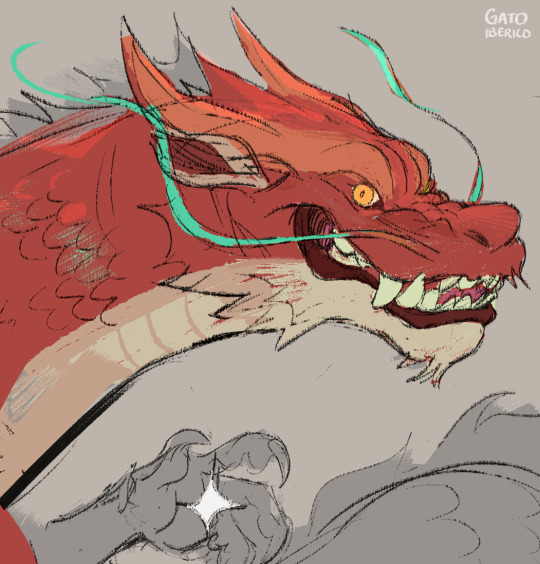
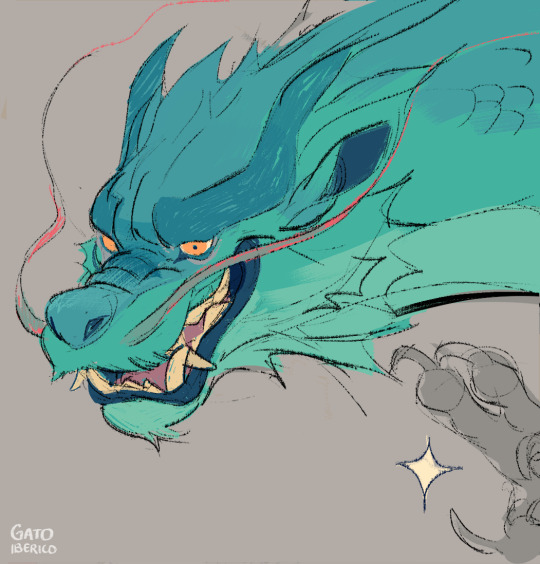
trying out a new brush
#art#digital art#dragon#elgatoiberico#also yes these have to do with the question I answered yesterday about what brushes I use#thanks anon for making me look through my preferred brushes and then accidentally run into a new one I thought looked neat#honestly the rusty nib pack is awesome it's got so much stuff?? I still need to experiment with more of it#btw the brush is called Waxy Nib 2#for anyone who might be curious :D
3K notes
·
View notes
Text
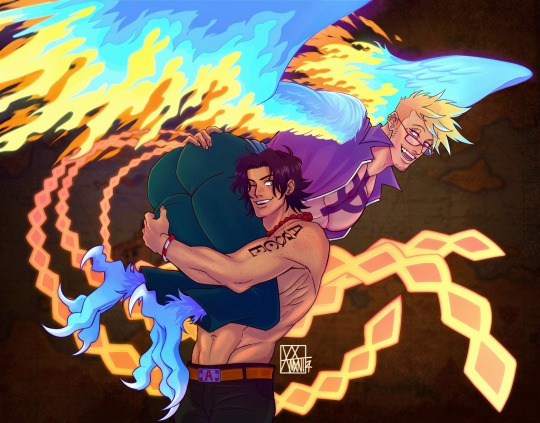
lovewings
#marcoace#my art#marco the phoenix#portgas d ace#ace one piece#marco one piece#one piece#one piece fanart#the concept was Ace stealing him across the grandline hence the shitty map bg lmao#which my gf was laughing at like 😔 ok i thought it was a neat idea but now im just ah..#the light source is really shit btw im sorry#theres stuff i know i shouldve done differently#but i just autopiloted into a safe zone#the safe zone im fighting to get out of bc i hate the end result#anyway enjoy enough pity party from me#this was supposed to be for valentines day but i was late#how to stop feeling disappointed when u finish something id love to know
345 notes
·
View notes
Text

This Means BIG LEFT ARM trust me hit the gym or hit red hair shanks
#cool#anime#cosplayer#looking for moots#photography#art moots#cosplaying#cartoon#handmade#cosplay#one piece#monkey d luffy#roronoa zoro#one piece fanart#one peice#opfanart#one piece killer#op killer#massacre soldier killer#eustass captain kidd#eustass kid#eustasscaptainkid#cool girl#cool art#cool look#cool stuff#awesome#shapes#tre cool#neat
44 notes
·
View notes
Photo
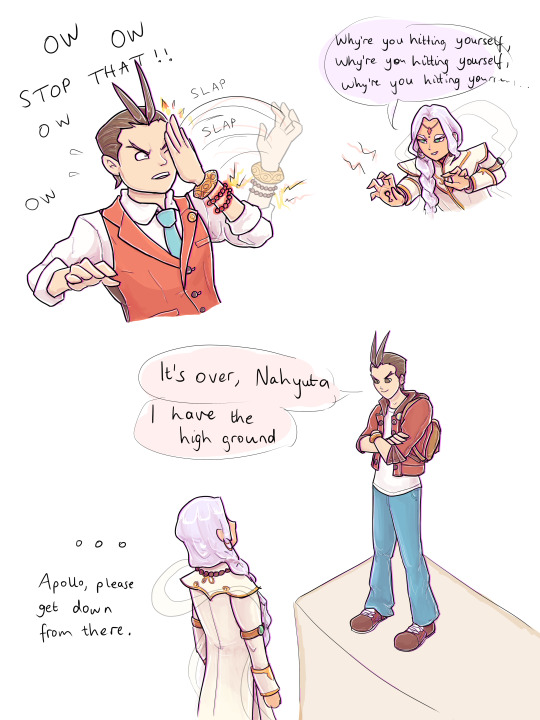
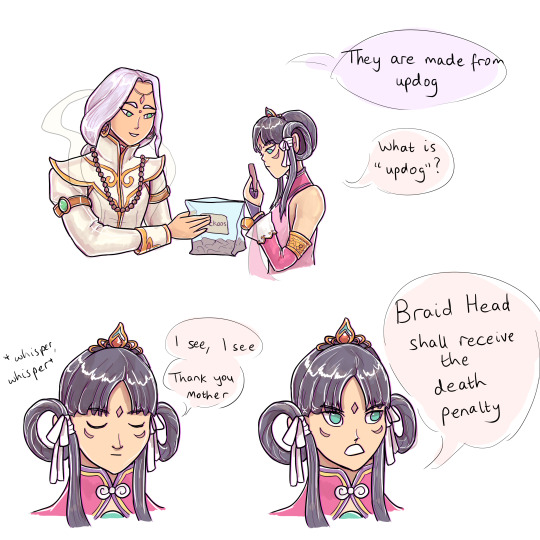
royal siblings shenanigans
#i just think they're neat :D#ace attorney#apollo justice#nahyuta sahdmadhi#rayfa padma khura'in#aa6 spoilers#random stuff#my stuff
727 notes
·
View notes
Text

Ashima!! Saw some folks doodling her and just had to give it a go! esp with the steampunk mecha puppetry face(My hand and eyes are hurting with her livery and side rods, I love you ashima but please-)

I lowkey want to have her on the Culdee Fell in my au after the International Great Railway Show since she’s metre gauge her like her irl basis plus her relationship with Thomas would be so 👀
#ttte#ttte ashima#ashima#thomas and friends#ashima ttte#my art#my artwork#my art <3#my artwrok#my art stuff#doodle#my art tag#my art style#doodlings#Got the puppetry mecha like face from taot concept illustration arts I’ve seen going around on Twitter plus some super neat ttte artists#Here on tumblr and da like artofwak rosedonyx d-issent gundamcalibarney SpaceBase-Betelgeuse there’s probably more im forgetting and I’m so#sorry if I forgot you but like she’s so gorgeous but she’s quite a pain to do and I’m going to digitally trace and draw her but yeah I’m#Loosely thinking of adding her on the cfr and how her relationship with Thomas would go I really love them with all my heart
43 notes
·
View notes
Note
after seeing the poll about who in the batfam could be Deaf, I am now obsessed with how the masks could affect their sign. If they use their signing space differently when in the vigilante persona or not. Signing is so distinctive to each person that the code switching they do would be interesting to see play out in their ASL. Also thinking about what family signs the family would use to refer to batshit things in their lives. q
YEAH YOU GET IT.
(the poll in question) i am deeply fascinated by the mechanics in which Deaf culture could play into the Batfam. bc most of them are wearing masks that would heavily inhibit ASL (given ASL is an expressive language) so i think it's more likely they'd use something akin to Makaton or Military Hand Signals that are not a fully developed language, but a communication aid, with a given set of signs for the typical things that need to be communicated in the field. meanwhile they'd be more likely to use ASL casually. (i'm unsure who all in the Batfam is confirmed to know ASL, but i know at the very least Bruce and Tim are)
i'm also very drawn in by the idea of other firms of assistive communication/tech used aside from just ASL. i personally find it believable that the masks of any of the Batfam could include automatic captioning tech that only they see through the inside of the mask, similar to captioning glasses at movie theatres, if they were Deaf/HoH. also how you would modify the concept of comm links to be more accessible, potentially projecting the message visually through the person's mask or maybe a wrist communicator sort of situation, depending on their personal preference. how the Batfam in general would interact with each other if one or multiple of them were Deaf would be heavily shaped and i think it's so fun. and i *love* the thought of personal signs they'd have to come up with bc well, ASL is hardly equipped for their lifestyle. also fun to consider sign names and if sign names are unique to the person or unique to the mantle. (eg, would the sign name for Robin be specific to which Robin, or just the mantle at large) there's so many little things that would change and i just think it's Neat. most people are approaching the poll from the perspective of their character of choice having hearing loss from vigilante work (which is a super valid way to approach it and i love those headcanons) but personally i find it fun if the deafness is a pre-existing condition and already something the Bat has been dealing with for years and thus approaches vigilantism needing to modify their gear slightly from the standard norm. how they could influence how Bruce trains them, emphasizing other senses. how they'd likely be far more tactical on the field, pressing their hands against something to feel for noise, ergo their gloves may be designed to more easily pick up vibration. (cannot tell you how much i do that irl) whether or not they'd hide it from the larger hero world is also an interesting question. it's all a fun internal struggle as well, internalized ableism and all. so much you could do with it!!
#necrotic answerings#batfamily#batfam#deafcul#deafawareness#actually deaf#anyway all this is so neat#let me have my belief that if batman can fall from the moon and live bc of his suit#he could feasibly create reliable/accurate captions built into domino masks.#also i'm serious about the feeling for if things are or not#like usually I dislike “feeling vibrations/other senses are stronger” stereotypes for d/Deaf characters#but that one has merit. I do do that.#which is all fun and games until someone finds me groping the washing machine.#I just. d/Deaf/HoH headcanons rarely include day to day life stuff#it's always just angst of “oh no character lost their hearing but uwu someone will notice and learn sign for them”#which is cute in a microcosm but i'm SICK of it#gimme a Deaf character who is entirely comfortable and has learned how to exist in their world#esp a vigilante like a Batfam member. it'd be so interesting I swear#show me a character taking out hearing aids before a fight bc they trust their body so much they're just going to go on instinct alone.#also how adaptive communication would look with a Deaf Batfam member talking to Cass would be SO cool#bc she can't read and also likely would struggle learning ASL#so them getting creative would be so fun.
28 notes
·
View notes
Note
Hi! I’m new to your blog and just want to say I LOVE your art style and everything, it’s so pretty! I wanted to ask, what program do you use? Additionally, brush and font (unless you just have super neat handwriting ajsjajdjsj)

TYSM! :D <3
The program I use is Firealpaca, started drawing properly in 2019 and it was what was easy and free for me at the time, just never felt the need to swap to anything else XD
#i WISH my writing was that neat! :'D#I got the font on a site called DaFont#as a graphic designer id never recommend it for finding fronts for professional use cause of like copywrite and stuff#but for your own personal art it has a ton of great ones to chose from :D#ty for the kind words!!#hope this helps!#asks#tribbletalks#<3
43 notes
·
View notes
Text

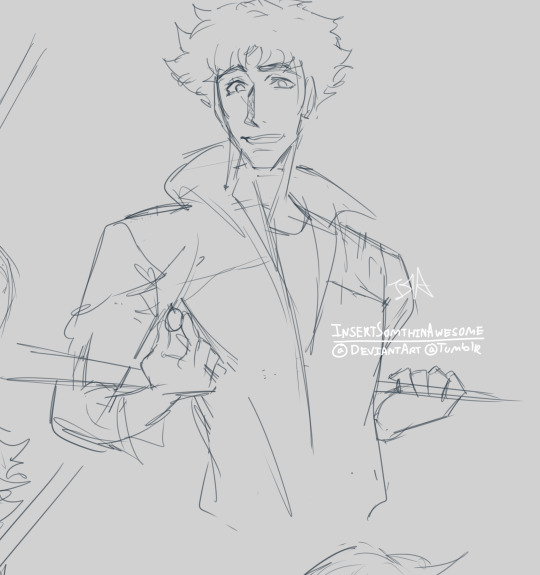
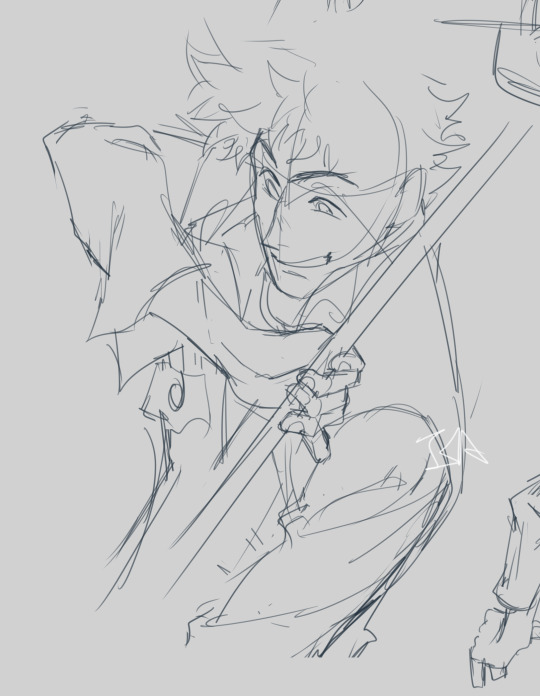
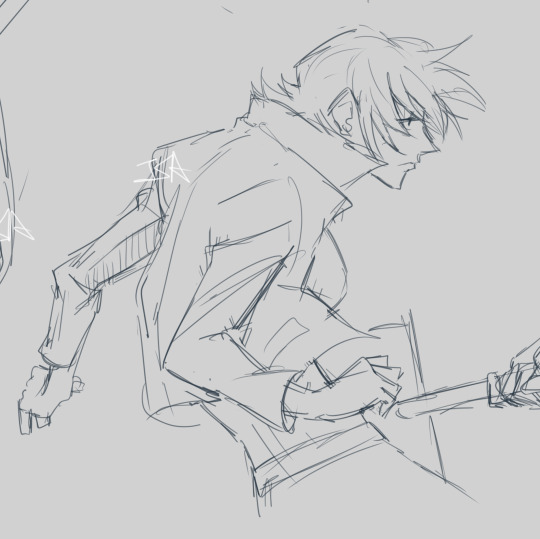
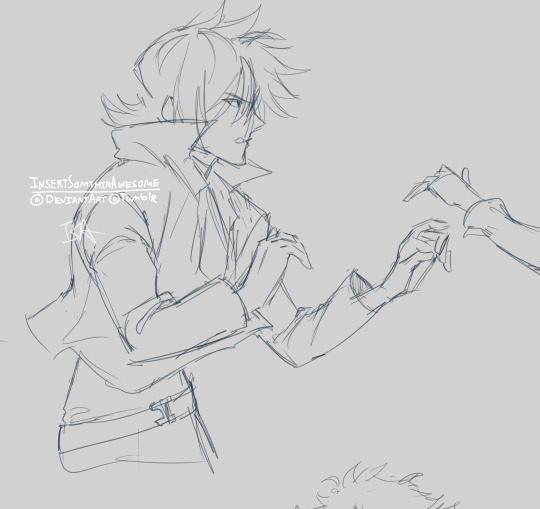

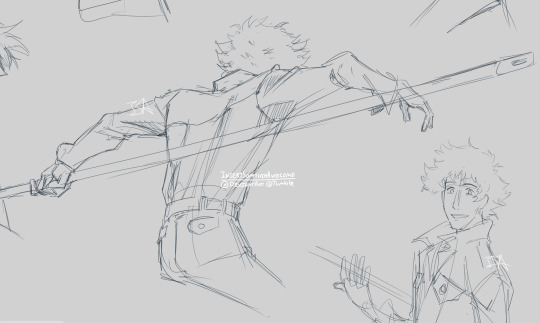



I can't normally share my studies because I'd very much need to get permission from the original creators I'm studying from to post them. But this time since it was a movie I can get away with it >:D Nothing too exciting, I just pulled up a fight sequence from the Cowboy Bebop movie and drew frames that looked interesting. It was fun for shutting my braincell off but still feeling like I was doing something to move forward :)
#InsertSomthinAwesome#isa's fanart#isa's art studies#June2023#Cowboy bebop#Spike Spiegel#Elektra ovirowa#I did not know she had a full name!! The more ya know :D#The desire to draw the titular “I love a woman” screenshot asdlkfjLSDKJGSDLJGLSDJGDSJ#Spike cowboy bebop#Elektra Cowboy Bebop#These were fun. Some of them are so bad. but like. it was for learning and I was choosing to let go of my perfectionism for this xD#IDK how often I'll share stuff like this. but I thought it might be neat. I felt like it so YOLO hope ya'll enjoy seeing some of the more#random behind the scenes stuff???? IDK that makes me sound so much more professional than i am xD#I need to watch this movie again sometime ^^;;
156 notes
·
View notes
Text
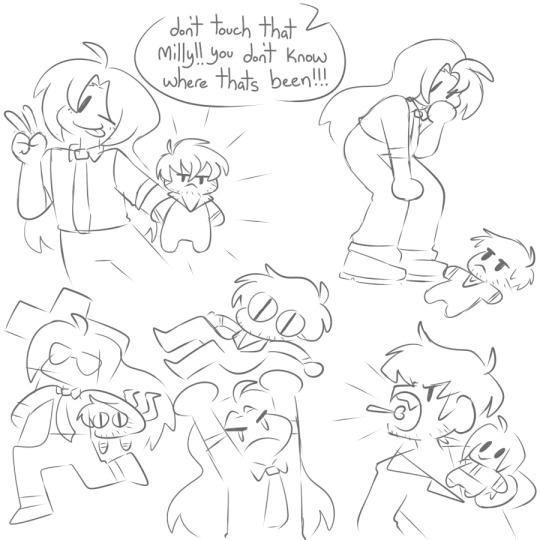
au where everything is the same but its not actually its completely different honestly woah
#doodles#fanart#trigun#milly thompson#nicholas d. wolfwood#millywood#<- ?? i guess????#okay so this isnt actually ship its more like she picks him up off the side of the road one day#and meryl is like ''ew what is that????'' and milly honestly doesnt know but she thinks its neat.#everything else is the same. except its completely different because now pocketwood is always there.#somehow.#behold. my vision.#the wolfy in the bottom right corner is an alternate take where he finds her face down in a ditch and doesnt know what to do#but stuffs her on the bike anyway.#anyways. this is pocketwood au.#she keeps him in her pocket.#pocketmilly ver. has milly enjoying the ride but meryl is a tamagotchi attached to her hip screaming at wolfwood to turn around.#he doesnt have a screwdriver so he cant rip her batteries out.#pocketwood
42 notes
·
View notes
Text

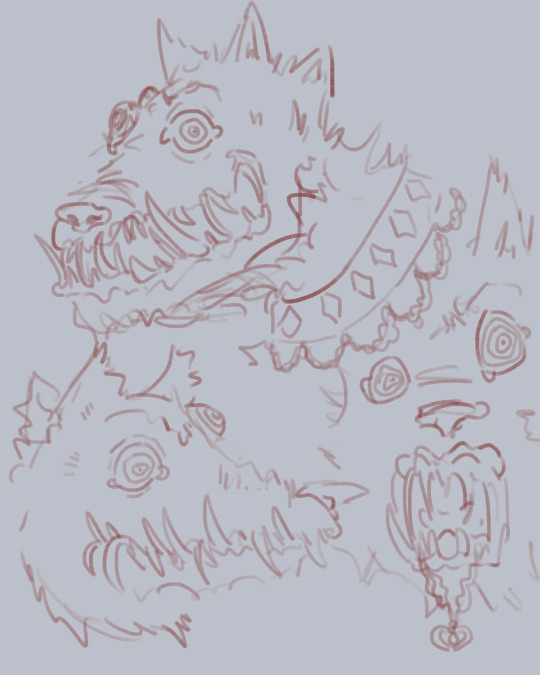
wolf
#d-raw#ace attorney#ace attorney fanart#phoenix wright#phoenix wright fanart#dahlia hawthorne#i just think fucked up wolfs are fun#and something something wolf in sheep clothing#i just think that would be neat#also trying out some lineless stuff#its fun#scribbleson
47 notes
·
View notes
Note
Hi it's me again! :D I forgot to tell you but I finished my model, like, last week?? Idk how long its been but oh well, I wanted to share the progress!! I made a little test animation to see how Blockbench felt to animate and ehhhh coudlve gone better


I hope they load in smoothly, im currently sending thus from my phone and its sooooo laggy DX
holy smokes dude that rocks!!! I love the texturing you did and THE HANDS!!! the posable fingers TvT <3 thank you so much for updating me on your work this is so damn cool!
9 notes
·
View notes
Text
the blueprints for the immersive phantom experience have been released...

and it looks like random people are going to hear 'wandering child' when they're walking down the street? 😅😅😅
#that seems like it'll be a little disruptive even at night!#but also really cool! ;D#it looks like it'll be the graveyard scene (page 19 of the pdf)#i hope it's the rooftop scene too! ;)#after the show's over the phantom escapes to the nordstrom across the street! ;D#the article says it'll be an open ended run#so this could be going for 35 years like the original! :o#let's hope it doesn't get too far like that...#this is cool but it can't beat the og! ;D#the building has been used for immersive stuff before which is neat! ;D#downton abbey in 2017 and trolls in 2018#both lasted for a year so we'll see about phantom! :)
6 notes
·
View notes
Text

captcha that
#art#my art#artists on tumblr#digital art#:3 :D 👍#i am not a robot.png#'what's with the hair' sometimes you wanna do layers. and then you do Layers lmao#//my brain was starting to grow mushrooms so i thought i'd paint lol :)#and then i didn't want to paint so i just did this ! i think it looks neat :D#i neeeeeeeed to play with effects more they are my liiiiiife hfhs#also used the soft airbrush. oo spooky lol :>#//ouhhh prolly be back later with pi.e stuff though !! :D#maaaybe#let's!! see !!!#toodles :D !#//edit: forgot my watermark HGhfsh
19 notes
·
View notes
Text
Background AD&D info for Stranger Things Fans
I'm doing it, I'm writing an overly-long post A WHOLE SERIES of overly-long posts about how the Stranger Things kids play D&D, and what exactly first edition and AD&D were for.
Source: I've been playing since 3rd ed/3.5 era, NOT AD&D, but I've had a lot of friends who've been in the game for much longer and I'm kind of a nerd for rulesets so I watch D&D bros go off on youtube sometimes for fun. Also, I've actually read the AD&D player's handbook, which is an experience let me tell you. If anyone who's played older editions wants to chip in, go for it!
I think I'm going to have to write a separate post (or posts...god hopefully not posts) about the kids' individual classes. So stay tuned for that. I'll link it from this one when it's done.
First, some history: The earliest editions of D&D are a little confused, numbering-wise, because they didn't know there were going to be numbered editions yet. Dungeons and Dragons debuted in 1974 as an offshoot of mini-based tabletop wargames that already existed at the time. These were mostly big games, where players controlled whole armies rather than creating individual characters, and set their forces against one another. (Not unlike very complicated games of chess, if you really think about it.) D&D was not, to my knowledge, the first individual-character-based ttrpg, but it became the biggest pretty readily.
Advanced Dungeons and dragons, or AD&D, came out in '77 or '78 (Wiki says '77, the publication date on the copy I've been using says '78), although they were still publishing Basic D&D as an alternate option, more or less until the mid-nineties. AD&D was a lot more rules-heavy and had a lot more intricacy going on (relatively speaking), and it's the game the ST kids play.
Compared to modern D&D, AD&D's basic rules feel both more and less. The mechanics themselves are often way more complex, and navigating your way through all of those percentage tables as a DM implies a pretty high level of math skill, worth noting for both an 11-year-old or a guy who failed senior year twice. The character options, on the other hand, feel slim. On first glance.
AD&D only has five classes -- ten if you count subclasses, which you probably should for AD&D. There's fighters, with special fighter subclasses ranger (Lucas's class) or paladin (Mike's class); clerics (Will's class, supposedly), with special cleric subclass druid; magic-users (or mages, theoretically El's class), with special mage subclass illusionist; thieves (NOT rogues! but this is definitely Lady Applejack's actual class, with some caveats), with special thief subclass assassin; and monks. You will note I did not mention bards. We will get to bards. (Probably in the character post, when I talk about Dustin. Bards are...special.)
AD&D had no barbarians, no warlocks, no sorcerers. No special, prescribed forked paths for a character to venture down. Subclasses functioned mostly like classes do nowadays -- you'd roll up a character and be a paladin from day one, simply lumped under fighter because many of the core mechanics were the same. And a significant percentage of text given to describing these classes seems full of really restrictive orders and conditions. Clerics are never allowed to use a bladed weapon? Druids refuse to touch metal? Assassins must engage the local guildmaster in a duel to the death in order to progress to level 14? Where's the creativity, asks the modern 5e D&D player? Where's the freedom?
And this highlights a really core, central thing about how AD&D works and what it was for, that I think modern audiences can very easily miss:
1st edition AD&D is a game about archetypes.
Modern D&D is a game played in a sandbox that's been dug up and worked over for the past fifty years, in a cultural landscape that values individuality and originality and sometimes pretends that daring to share a trope with anything that came before is somewhere between boring and a straight-up crime. Original D&D came with very different baggage, and while it was still very much a game about storytelling, the KINDS of stories being told were a little different.
Characters weren't intended to be highly specialized, granular creations with intricate backstories and complex individualized skill sets. This wasn't even because those kinds of character-driven games or narratives were seen as bad, necessarily -- it's simply not what the game was written for!
First edition D&D was designed for big, epic adventures, where players could embody their own personal instance of a specific stock character trope. It was written for "I want to be a knight!" and "I want to be the magician!". It was about getting to be YOUR VERSION of a very particular, already-existing idea that would have been familiar from fantasy fiction at the time.
So, when the AD&D rules say that druids hold oak and ash trees sacred, that they will never destroy woodland or crops under any circumstances, that they cannot and will not use metal weapons or armor, that there only exist nine Level 12 druids in the world and they form a council with students below them -- this isn't an attempt to micromanage players, to be arbitrarily pedantic or controlling. This is Gary Gygax attempting to present the archetype that 'druid' is meant to encompass. This is what a druid is, according to this ruleset: a priest of nature, part of an order with rules and loyalties, with these priorities and these ideals. Mechanics and personality are not divorced in AD&D as they are in 5e; they are written together, to outline a specific character concept, and that is what's presented for the players to get to play.
If this sounds like it leads to boring, formulaic stories -- well, it could. But archetype-based stories, particularly adventure stories, are by no means necessarily bad. A story about a mysterious and knowledgeable old wizard; a naive-but-determined farmboy full of destiny and potential; a reckless rogue, slick but sometimes bumbling, selfish but secretly loyal; a beautiful princess, charming and clever and sharp-tongued when she wishes to be -- it's a pulp novel full of stock characters and tropes. It's Star Wars. What makes Star Wars special is NOT that its characters are specific, convoluted, or entirely original. What makes it special is that the specific instantiation of these characters, the little things that make Luke Skywalker be Luke Skywalker and not any other callow farmboy. Star Wars uses these archetypes well, and that makes them deeply satisfying. THAT'S the kind of story ethic behind AD&D.
First edition D&D has a reputation of being all about combat, and not about story at all. And on the surface, it's somewhat true: AD&D's rules are also highly combat-based. This isn't because players were expected to only do combat and dungeon crawls, and never roleplay -- but it WAS expected that, by signing on to play D&D, players were most interested in a campaign of exploration and fighting towards some fanciful goal. There was an element of buy-in from the start. The game was (and still very much is), at its core, about going on a quest.
The thing to remember, though, is that a quest IS a story. It's not the psychological trauma-unburdening character-driven narrative that pop culture might tell you to expect in modern D&D, but AD&D was every inch as story-based as the game's ever been. The stories being told were a little different, but with a very similar root.
The 1979 Dungeon Master's Guide is actually full of information about how to set up a world and stock it with people, political factions, and socioeconomic logistics. There are extensive rules about how high-level adventurers become part of the political fabric of the realm, building forts and amassing followers and making names for themselves. (Here, again, we see echoes of AD&D's forebearers in war games, and certain elements of the game that are all but gone from modern D&D.)
What there AREN'T a lot of rules about, on the other hand, are things like skill checks. There's no "persuasion" or "investigation" in AD&D, no list of specific things players can do and how good they are at them. Aside from combat and a small handful of specific non-combat activities, discretion over the success or failure of just about anything was left up to the DM. A DM was always free to call for a dice roll, and could set an arbitrary target number for success at any activity, but the rules also don't say they have to. To see if the characters persuade the barmaid to give them a hand, the players would have to be persuasive. To find the hidden clue in the cluttered chamber, the players might have to describe themselves looking in the right place.
In other words, there are relatively few rules for activities outside of combat, not because those activities were expected to be absent, but because they were expected to be unpredictable. How much exploration, and what players had to explore; what NPCs to interact with, and how they might react to being spoken to; what factions might exist, what moral quandaries could unfold, even the goal and big bad guy of the whole campaign -- the original sourcebooks for AD&D offer at best some very general advice, and NO hard and fast rules. That was for players and DMs to decide.
Many players and DMs, I know, fell on the side of engaging in relatively little worldbuilding complexity outside of the very mechanically-crunchy dungeon crawl. What little we see from the campaigns in ST is certainly mostly combat-oriented. And yet there are also hints of storylines happening off camera. Season 1's one-day eight-hour adventure was probably mostly dungeon crawl. Season 4's campaign takes most of a school year, until the players recognize the members of the cult they've been chasing for months, and know Vecna lore that would only have been published in one or two places anywhere by then, which means they probably learned it in-game. We don't see a lot of evidence of specific character plotlines -- in fact, repeatedly we're shown that the Party's characters share names with their players, making the whole thing even more clearly a big kids' game of let's-pretend. But that doesn't mean there's not a story.
So in short, the original game of D&D is built for epic quests, founded in very specific archetypes, but with the space for just about infinite in variation within that framework. That's what the Stranger Things kids are playing.
(And with this posted, I can start writing about the individual classes these kids are playing and what that says about each of them.)
#stranger things#D&D#driveby meta attack#seriously if an old-school AD&D player wants to tell me I'm way off here#I'd LOVE to learn more#I have more history and knowledge than many (certainly many on tumblr)#but far less than some#mostly it just felt like I needed to write THIS part down before I went off about rangers and bards#and y'all fanfic writers DEFINITELY need a lesson in what “paladin” meant Back In The Day#it's ok we'll get there don't worry#I just think this stuff is NEAT#LONG POST
149 notes
·
View notes